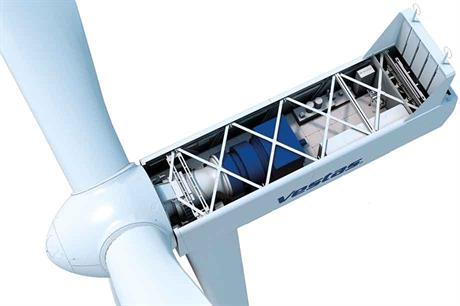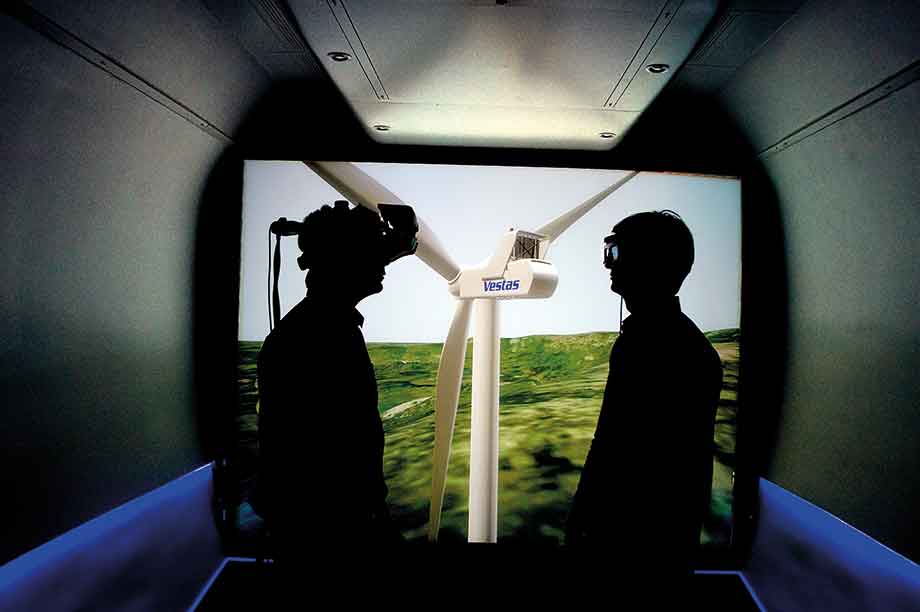
 Industry News
Industry News
Vestas' new onshore platform, christened EnVentus, propels medium-speed geared drivetrain technology and modular design into the mainstream market, setting new standards for power rating and rotor size at 5.6MW and 162 metres.

"Upgrades to the current two platforms caused a domino effect, with secondary challenges and issues popping up that had to be resolved in parallel," says chief technology officer Anders Vedel.
"It has been difficult to boost the main component volumes sufficiently, because only around 10% of all components could be standardised for cross-platform use. And each upgrade further requires enhanced installation, service and maintenance instructions."
As far back as 2012 it was clear to Vedel that Vestas would require new modular turbine architecture.
The shift from the mainly seller-oriented approach towards much more competitive market-driven conditions was already becoming apparent.
Modular construction would offer inherent benefits in the standardisation of main components and repetitive similar tasks with all the associated cost savings.
Implementing advanced modularity would further allow Vestas to respond to energy-related challenges in a much more agile manner.
Modularisation involves multiple interrelated aspects: product design, component sourcing, manufacture and assembly, transport logistics, installation, service and maintenance. The concept’s principles are understood and appreciated in many other industries, including the manufacture of heavy trucks and excavation equipment.
"Wind turbine and truck manufacture both involve handling big pieces," says Vedel.
"But a truck plant’s annual volume is much bigger than a turbine plant’s. To gain series production experience with modular products in support of the EnVentus concept development, we gathered knowledge from a leading truck manufacturer.
"Modularisation has been an integral part of their business culture since the 1940s."
With the introduction of EnVentus, Vestas has become the first large-scale mover in the medium-speed geared sector of the onshore wind market.
All of the platform’s new models, starting with the V150-5.6MW and V162-5.6MW, will incorporate a compact, modular, semi-integrated medium-speed geared drivetrain.
"Medium-speed is a proven technology for Vestas because it builds on the design principles we introduced in our V164 offshore turbine in 2011," says Vedel.
"The V164-8.0MW series already has a substantial track record, and the 10MW uprate was announced last year.
"Additional EnVentus solutions are based on improved system designs from the 2MW and 4MW series, such as the single-web structural-shell-blade design.
"Our first in-house developed modular solution was the converter for the 4MW platform, and there are already over 800 units in operation," says Vedel.
A virtual reality tour led by chief engineer Martin Skov Jensen inside a V90-3.0MW nacelle at Vestas’ headquarters reveals more of the new platform’s specific design details and modularised solutions, and the similarities and differences with the V164.

The drivetrain’s compactness is immediately apparent, as is the fact that the entire drive unit is shifted forward towards the approaching wind.
"The short rotor overhang, especially for the V162 blade, meant that we had to create sufficient clearance to prevent the blades striking the tower," says Skov Jensen.
"The measures include a combination of tilting the drivetrain, pre-bending blades and using forward-inclined blade bearing seats in the hub to alter the hub coning."
The main shaft with two pre-stressed taper-roller bearings, assembled in a cast housing, is functionally similar to the V164’s.
Specific to the new platform is a modular main shaft front flange with multiple bolt circles of different radiuses to accommodate various size hubs.
A marked reduction in total drivetrain length — as well as mass and cost — is achieved by skipping the low-speed coupling between the main shaft unit and the gearbox.
Minimising deflection of these two main drivetrain components enabled this optimisation.